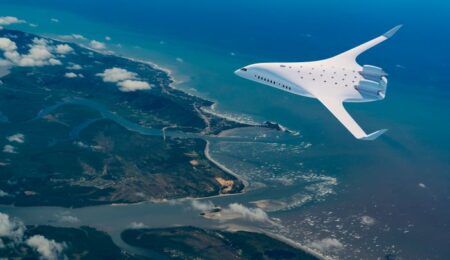Safran has announced it carried out successful first ground tests of the Open Rotor demonstrator engine in Istres, southern France, on October 3.
The Open Rotor demonstrator, developed through Europe’s Clean Sky research program, is a strategic focus in Safran’s Research and technology efforts, and a key part of Safran’s plans to develop a propulsion system meeting aircraft manufacturers’ future needs toward 2030. Safran and its partners in the Clean Sky program have received €65m (US$77m) in funding from the European Commission for this project, over a period of eight years.
As its name indicates, the Open Rotor features a breakthrough construction with two counter-rotating, unshrouded fans, allowing it to reduce fuel consumption and CO₂ emissions by 30% compared with current CFM56 engines.
Launched in 2008 and led by Safran, the demonstration program has already reached several major milestones, including wind-tunnel tests at French aerospace research agency ONERA, leading to the assembly of a demonstrator in 2015; and the start of ground tests on the open-air test rig in Istres in May 2017.
Safran is exploring other propulsion solutions as well, in particular the UHBR (ultra high bypass ratio), a shrouded turbofan engine with a very high bypass ratio, which would reduce fuel consumption by 5 % to 10%.
The UHBR would be a credible solution for aircraft makers looking toward 2025, because it could be easily integrated on current aircraft. At the same time, Safran is also studying distributed, electric and hybrid propulsion systems.
At the Istres site in southern France, Safran now has a new test stand covering some 80,000m² (864,000ft²), the only one of its kind in Europe. This new test rig will be used to test the new-generation LEAP turbofan and future upgrades, the Open Rotor and UHBR technology demonstrators, and engines with complex architectures and/or of large size.
Completed in 2016, this new test rig reflects the dynamic regional involvement in the Istres test center, with strong support from public authorities, as well as partnerships with local companies and universities. At the same time, this key project has led to the creation of 45 new jobs at Safran.
October 11, 2017




